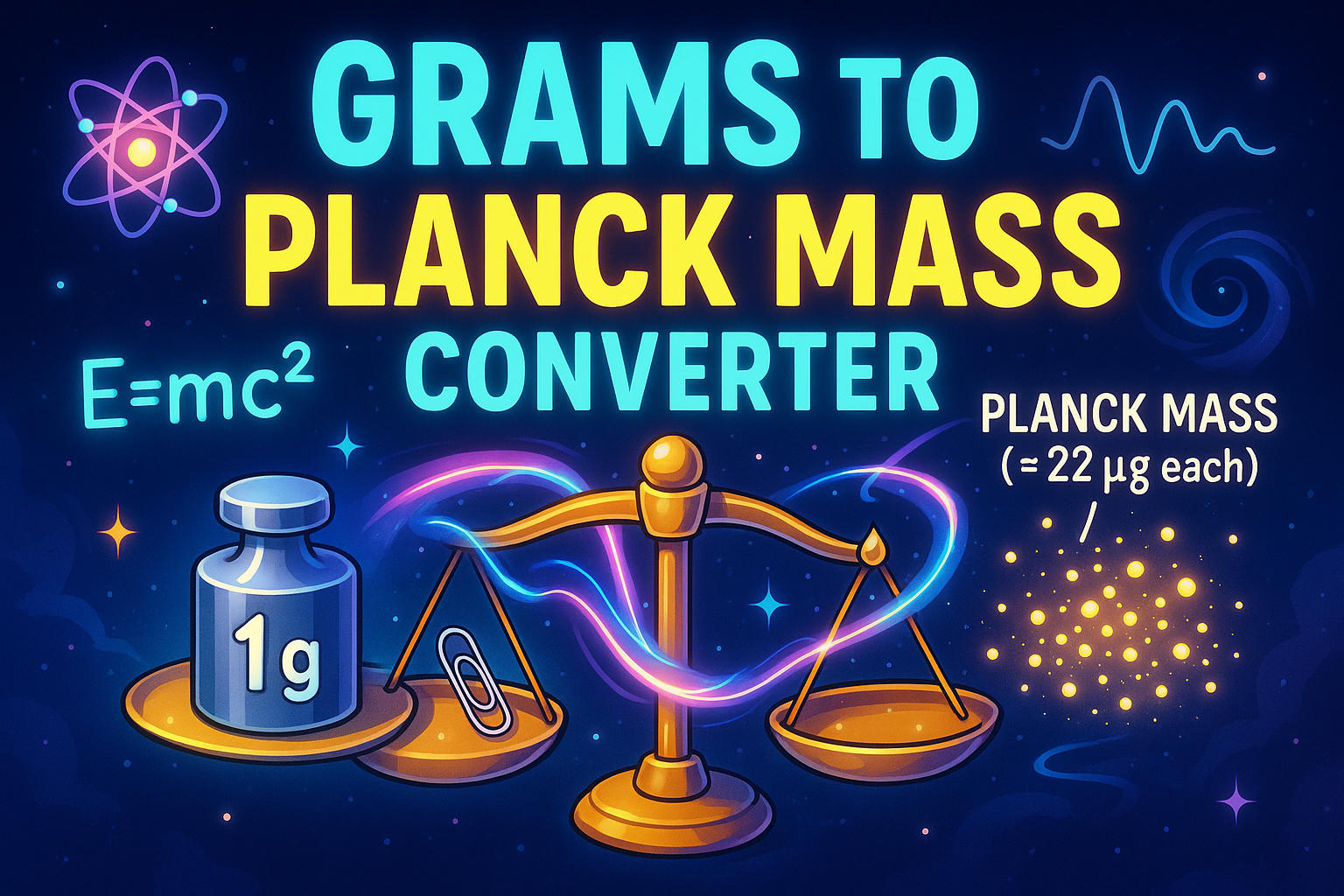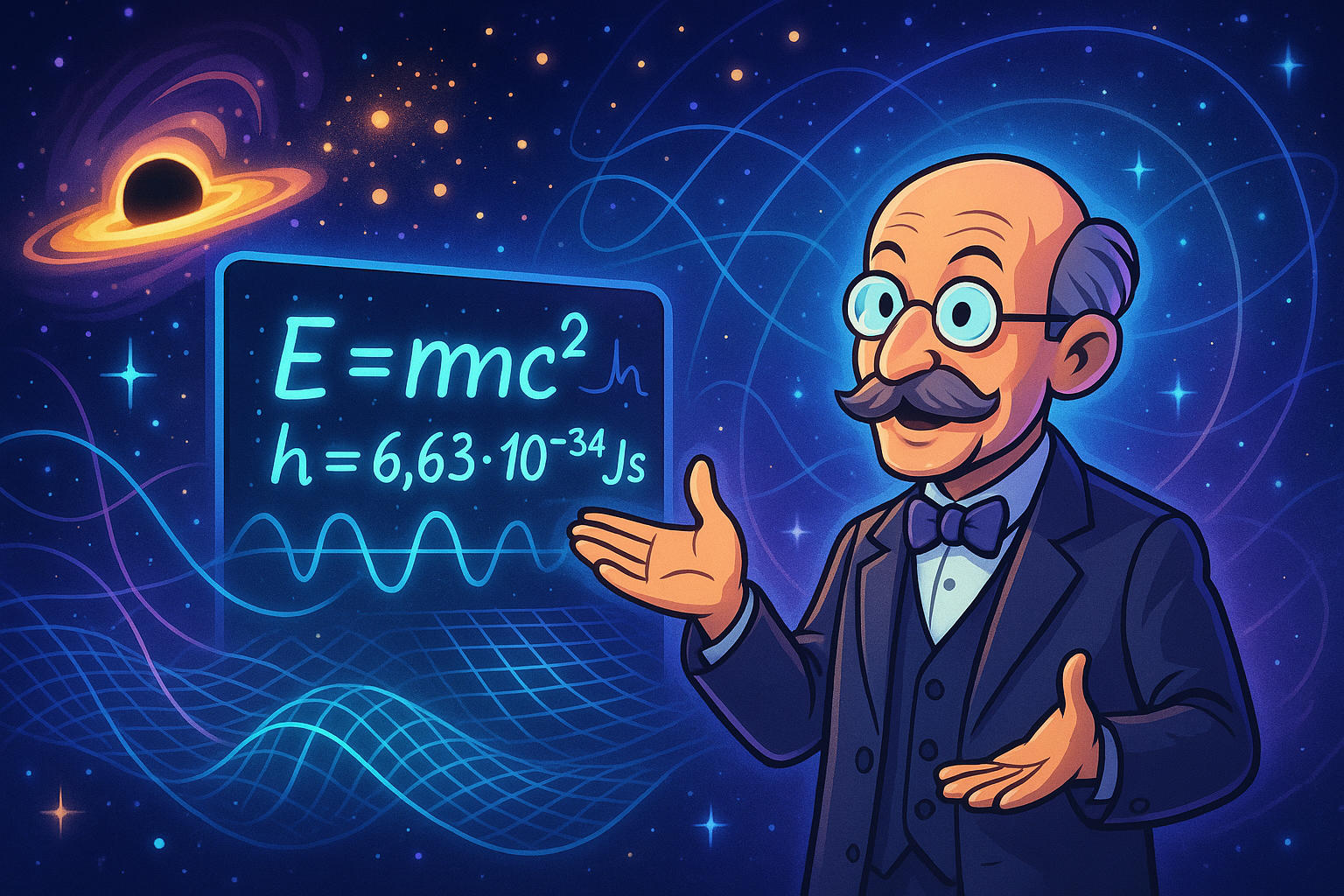grams to Planck mass – How to convert g to Planck mass
Converting grams to Planck mass might not come up in daily life — unless you're diving into quantum physics, black holes, or cosmology. This guide breaks down how to convert g to Planck mass, what makes this unit so important in theoretical physics, and where to use it.
What Is a Gram and a Planck Mass?
-
A gram (g) is a standard metric unit of mass, equal to one-thousandth of a kilogram. It's used worldwide in fields ranging from cooking to pharmaceuticals. For basic conversions, tools like our Weight Converter or Grams to Kilograms Converter are perfect for everyday needs.
-
The Planck mass, however, belongs to the world of quantum theory. Defined using fundamental constants like the gravitational constant, the speed of light, and Planck’s constant, it equals about 2.176434 × 10⁻⁸ kilograms, or around 21.76 micrograms. This unit represents the scale where quantum mechanics and gravity begin to merge — far beyond typical lab measurements.
If you’re starting with kilograms, you can also use our Kilograms to Planck Mass Converter.

How to Convert Grams to Planck Mass
Here’s the formula:
Planck mass = grams ÷ 2.176434 × 10⁻⁵
Example:
If you have 1 gram:
1 ÷ (2.176434 × 10⁻⁵) ≈ 45,942.4 Planck masses
This means even a tiny gram of matter contains nearly 46,000 Planck masses — a scale difference that highlights just how small the Planck mass is.
To skip the math, use our Grams to Planck Mass Converter for instant, precise results.
Did you know?
-
In pharmaceutical research, even a 1 milligram (0.001 gram) error in drug formulation can alter how a medication is absorbed, especially in high-potency drugs.
-
The Planck mass is considered the tipping point where quantum gravity becomes relevant — below this mass, gravity behaves classically; above it, quantum effects can't be ignored.
-
In baking competitions, even a 2-gram difference in flour can change the final texture. Accuracy matters!
-
At around 22 micrograms, the Planck mass is roughly the weight of a tiny speck of dust — yet it’s massive in quantum physics.
-
Postal services still calculate shipping costs per 100 grams — even in the age of digital automation.
-
In some string theory models, the Planck mass is the "vibration scale" of fundamental particles — the mass at which strings could exist.
When Physics Met the Planck Scal
In the early 1900s, Max Planck introduced a system of “natural units” based on the constants of nature — leading to the Planck time, length, and mass. Among these, the Planck mass became especially important in theories that try to unify general relativity and quantum mechanics.
From black hole thermodynamics to the early moments of the universe, this unit appears across advanced models in quantum gravity and string theory. While current technologies can't probe this scale, it serves as a guiding benchmark for physicists building the next generation of models.

Conclusion
Now you know how to convert grams to Planck mass, bridging everyday units with one of the most fundamental quantities in modern physics. Whether you're exploring quantum fields, early-universe theories, or just curious about how nature is measured at its limits, this conversation opens a door to deeper understanding.
Let’s use the dedicated Grams to Planck Mass Converter to get precise results fast. For broader needs, check out our Weight Conversion or explore all measurement tools with Jetcalculator’s full converter tool hub.

